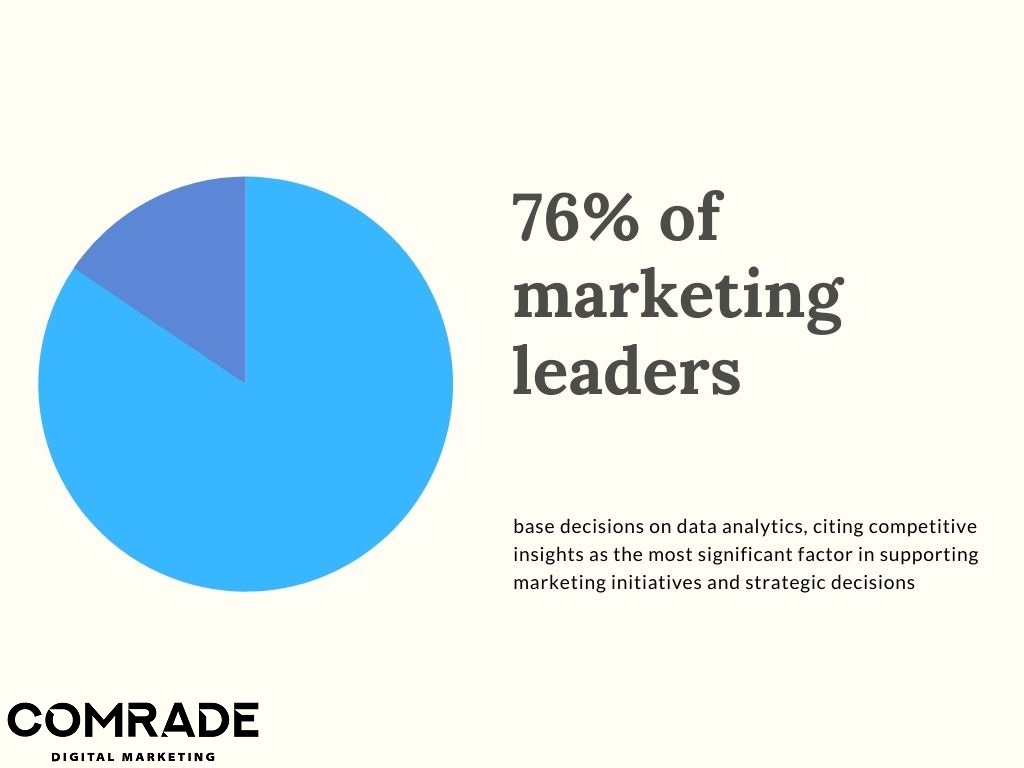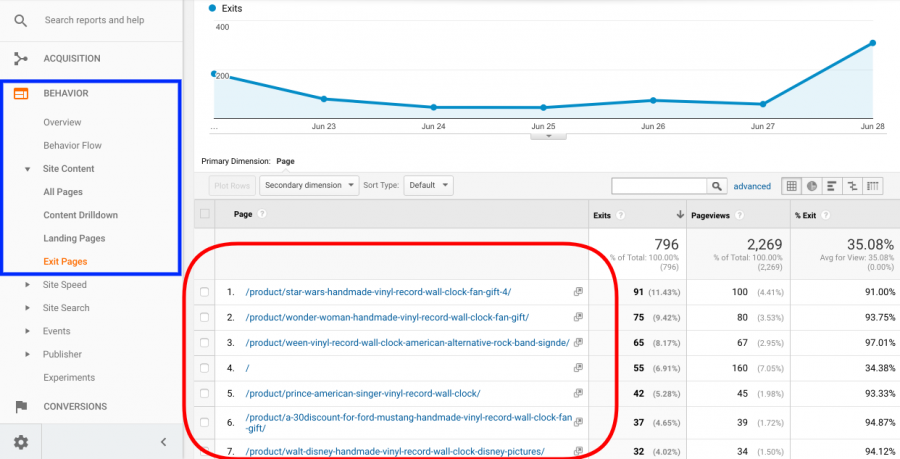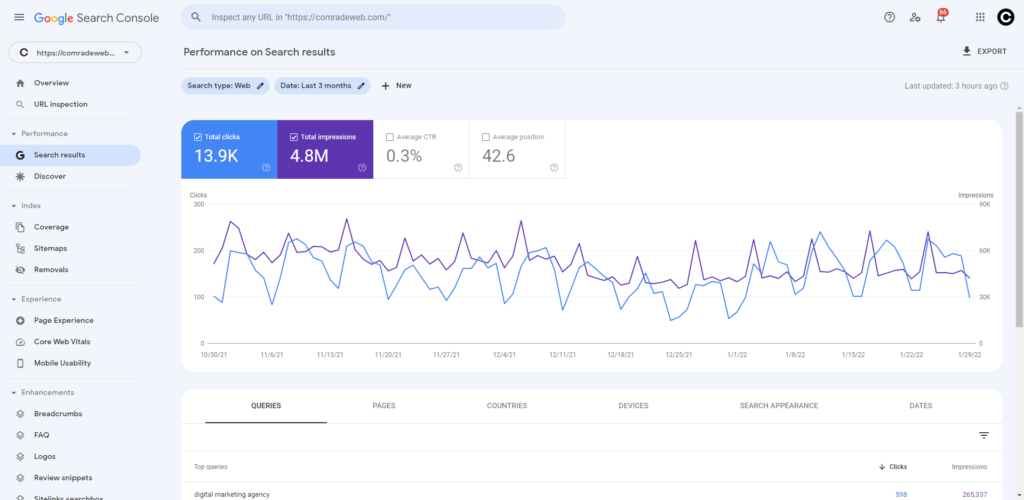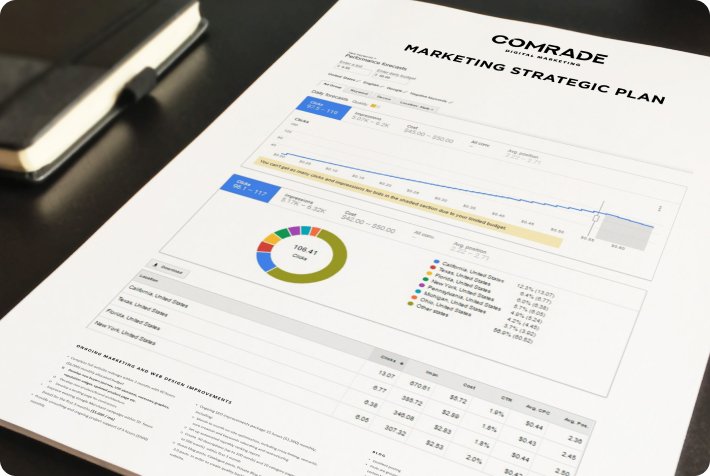In today’s fiercely competitive landscape, businesses must stay ahead of the curve to succeed. And with the vast amounts of customer data available, digital marketing analytics has become an essential tool for organizations to inform their marketing efforts, increase their marketing return on investment, and gain a competitive edge. However, despite the promise of improved precision and performance, many businesses struggle to effectively implement analytics, often spreading it thin across the marketing department or failing to integrate it fully into their overall strategy.
To fully realize the benefits of digital marketing analytics, businesses must adopt a holistic and integrated approach. By leveraging the power of inbound marketing analytics, organizations can develop a clear vision, create strategic initiatives, and build the capabilities needed to create real value and remain innovative. In fact, according to recent studies, a vast majority of marketing leaders base their decisions on data analytics, with competitive insights cited as the most critical factor in supporting marketing initiatives and strategic decisions.
In this article, we’ll explore why digital marketing analytics matters to your business, the benefits of adopting an integrated approach, and how you can leverage analytics to improve your marketing efforts, attract and retain customers, and achieve long-term success.
What Is Digital Marketing Analytics and How It Can Benefit Your Business
Digital marketing analytics is the process of measuring, analyzing, and interpreting data collected from various digital marketing channels, such as social media, email, website traffic, and search engine optimization (SEO). It involves using tools and techniques to understand customer behavior, preferences, and patterns to optimize marketing efforts, improve ROI, and drive growth.
Digital marketing analytics can help businesses answer key questions such as what marketing channels are generating the most traffic, which campaigns are driving conversions, and what content resonates most with customers. It can also help identify areas of improvement and opportunities for growth, such as optimizing website design, refining target audiences, and developing personalized content strategies.
To effectively leverage digital marketing analytics, businesses need to collect and integrate data from multiple sources, and use powerful tools to analyze and visualize this data. This requires a mix of technical skills and marketing knowledge, as well as a deep understanding of the tools and methodologies available.
In today’s digital age, digital marketing analytics is critical for businesses that want to stay competitive and succeed in the marketplace. By leveraging data insights, businesses can create targeted, personalized marketing campaigns that resonate with customers, improve ROI, and drive growth.
Top Benefits of Marketing Analytics for Your Digital Strategy
One of the main advantages of digital marketing analytics is that it allows businesses to track the performance of their digital campaigns in real-time. This means that they can quickly identify what’s working and what’s not, and make adjustments accordingly. For example, if a business notices that a particular ad campaign is not generating the desired results, they can tweak the messaging or targeting to improve its effectiveness.
Another advantage of using digital marketing analytics is that it helps businesses understand their audience better. By analyzing data such as website traffic, social media engagement, and email open rates, businesses can gain insights into who their customers are, what they’re interested in, and how they prefer to interact with brands online. This information can then be used to create more personalized and targeted marketing campaigns that resonate with customers on a deeper level.
Overall, implementing digital marketing analytics into your overall digital strategy can help you make more informed decisions, optimize your campaigns for better results, and gain a deeper understanding of your audience. With so many powerful tools and techniques available today, there’s never been a better time to start leveraging the power of data-driven insights in your business.
Bottom-Line Advantages of Implementing Digital Marketing Analytics
Here are a few advantages of implementing digital marketing analytics into overall digital strategy:
- Real-time tracking of campaign performance
- Ability to quickly identify what’s working and what’s not
- Improved ability to make informed decisions based on data insights
- A better understanding of customer behavior and preferences
- Creation of more personalized and targeted marketing campaigns
- Optimization of campaigns for better results
- Increased ROI from digital marketing efforts
- Enhanced ability to measure the success of campaigns against KPIs
- Identification of new opportunities for growth and expansion
- Improved overall efficiency and effectiveness of the digital strategy.
By leveraging the power of digital marketing analytics, businesses can gain valuable insights into their online presence, customers, and market trends, ultimately leading to better decision-making and business outcomes.

Key Digital Marketing Benefits of Using Analytics for Your Business
Digital marketing analytics can provide numerous benefits to a business, but here are four key benefits:
Improve your decision-making with Marketing Analytics
Digital marketing analytics can provide businesses with valuable insights into how their digital marketing efforts are performing. By analyzing data from various channels, such as website traffic, social media engagement, and email open rates, businesses can make informed decisions about their marketing strategies and campaigns. For example, if a particular social media platform is not generating much engagement or revenue, a business may decide to shift its focus to another platform that is performing better.
Increase ROI with Digital Marketing Analytics
Effective use of digital marketing analytics can help businesses identify which channels and campaigns are generating the most revenue. By tracking metrics such as conversion rates and customer lifetime value, businesses can adjust their efforts accordingly to maximize their return on investment. For example, if a paid search campaign is generating a high number of conversions at a low cost per acquisition (CPA), a business may choose to allocate more budget to that campaign
Get a better understanding of customer behavior with Analytics Insights
Analytics tools can provide insights into how customers interact with a business’s website, social media accounts, and other digital channels. This information can be used to improve the customer experience and drive more conversions. For example, if customers are frequently abandoning their shopping carts on an e-commerce website, a business may look at the data to identify potential issues in the checkout process or offer incentives to encourage customers to complete their purchases.
Gain a competitive advantage with Marketing Analytics
By using digital marketing analytics effectively, businesses can gain a competitive edge by identifying trends and opportunities before their competitors do. For example, by monitoring search engine rankings and analyzing keyword data, businesses can identify emerging trends in their industry or market and adjust their strategies accordingly.
Key Digital Marketing Analytics Metrics You Need to Track for Your Business
If the goal of marketing is to reach qualified leads at the moments that most influence their decisions, what are the key performance indicators used to measure marketing performance? Clue: It’s not only revenue.
Additionally, not all marketing metrics are equal, either. For instance, vanity metrics appear positive, but they don’t always translate into meaningful data that drives conversion rates. Digital analytics growth that may not necessarily indicate increased profitability includes the number of app downloads, page views, or social media shares.
While the most appropriate metrics vary from one campaign to another, marketers will always measure the effects a campaign has on customer behavior. The right metrics exert the most impact on business goals, which may be lead retention for one campaign and sales for another.
Although tracking as many KPIs as possible is tempting, starting with a few key business metrics is most effective. Then, you can strategically expand monitoring data that provides the most business value. Naturally, any digital marketing analysis must always align with company goals.
Monitor Unique Visitors, Pageviews, and Traffic with Marketing Analytics
Unique Visitors
Google Analytics defines unique visitors as: “The number of unduplicated (counted only once) visitors to your website over the course of a specified time”. Tracking unique visitors gives organizations an idea of the size of the audience they’re attracting. When you separate the traffic data into recurring and unique visitors, you’re better able to determine how your marketing channels and campaigns are doing in relation to your digital marketing strategy.
For instance, let’s say a marketing campaign brings in 200 visitors to your website. They could be a mixture of unique or recurring visitors or one visitor returning 200 times. Why does this matter? Well, if you’re selling goods or services, there’s statistically a higher chance of making a sale with 200 unique visitors than fewer visitors making repeated visits.
Of course, it’s also true that returning visitors are likely to bring in more revenue than a once-off sale. This seems like a contradiction, but it perfectly illustrates the importance of internet marketing analytics, as both scenarios can ring true depending on the context. Regardless of conversion goals, having a complete data set on your business’s website traffic is vital.
Unique visitor metrics are important because they show stakeholders and marketers the number of impressions an ad will receive on your website. It also helps in selecting which ads to retarget to previous website visitors, and can guide strategists as they develop content to convert users into buying customers.
Pageviews
Pageviews show how often visitors access a website or landing pages and are one of the most commonly tracked web marketing analytics. They help determine what target audiences are interested in, how effective a page’s SEO is, and customer journey trends. This metric is especially useful when assessing digital marketing and sales analytics on individual pages.
For example, let’s say for the past month, your website has received average traffic overall. However, when you look at pricing page performance, you notice an unusually high number of page views. This could indicate that more visitors were viewing that page (possibly due to a pay-per-click sale advertisement), that the SEO change you made is working, or that the page continues to tirelessly reload, due to a technical issue.
High page views could signify one of several things, which provides a good starting place to further investigate where the views came from and what users did after viewing the page. On the contrary, low views indicate the page isn’t appealing enough to attract visitors.
Every decent digital marketing strategy strives to garner more page views. If you’re struggling, you may want to review the quality of your content and ensure it’s of a high standard, as well as optimize your technical SEO and website layout.
To help leverage the most from pageview metrics, you should monitor how many pages users access in one day, whether they visit the same page, explore random pages on your website, or are compelled to visit just after payday. Understanding helps businesses make data-driven decisions like updating buyer personas or deciding when to schedule paid ads.
Website Traffic
Website traffic refers to the volume of users visiting a website. Various internet marketing analytics tools make it possible to determine exactly where your website traffic is coming from. This matters because most marketing efforts adopt a multichannel marketing strategy, meaning they use different social media platforms, email marketing, and paid search advertisements to reach new customers. Without this data, you won’t know where to boost or improve campaigns.
There are several metrics to consider when measuring web marketing analytics:

Keep Track of Session Numbers, Channels, and Purchase Percentage with Analytics
Session Numbers
Businesses’ goals are to have heavy traffic (high count of sessions) and high conversion rate. However, those two metrics shouldn’t be the only things you should be looking at. It is also very important to look at Pages/Session. This feature shows how the visitors interact with the website. This gives you an idea of their behavior. To see the data for this metric, just click on Audience then select Overview.

For example, it shows you what page do they usually go to and what do they do once they’re on that page. Understanding these behaviors could guide you to make more of those pages, pages that are interactive for the visitors and could lead to a higher conversion!
Channels
We previously touched on the importance of determining which channels traffic comes from. For example, if Facebook drives more traffic than Instagram, then logic dictates marketing spend should be adjusted accordingly.
Purchase percentage
Purchase percentage is the number of users who visit a site and make a purchase, which is useful to project customer retention and average order value. Calculating average order value helps refine pricing strategy and marketing efforts.
Check Bounce Rate, Time on Page, Traffic Sources, and Exit Page with Marketing Analytics
Bounce rate
Backlinko defines bounce rate as: “The percentage of visitors who enter the site and then leave rather than continuing to view other pages within the site”. This is indicative of the quality of your traffic source and how effective your landing page is. There are a lot of reasons why visitors leave a page once they get there: it could be unorganized, unattractive, or too long to load, among many other reasons. As a business owner, it’s in your best interest to have an effective website that has a low bounce rate.

Time on Page
Unlike bounce rate, time on the page refers to the average amount of time a user spends on a website page. Time on the page provides insight into whether a website is attracting the right traffic, and if its content is relevant to the intended target audience.

It is critical to determine where your visitors are coming from and understand what they are looking for. You want diverse sources of traffic for your website. In Google Analytics, you could do this by going to the Acquisition Menu. There are 3 main categories of Sources which are:
- Direct Visitors – These visitors are the ones that input your website URL to get to your website
- Search Visitors – These visitors are the ones that got to your website by typing in keywords in search engines and then the search engine gave them the website
- Referral Visitors – These visitors ended up in your website through a mention from a different site, these referrals could be blogs, forums, etc.
This information is also very helpful when determining where your SEO stands. Having a lot of search visitors means that your website is showing up in search engine results, while having a lot of referral visitors mean that your business is getting mentioned a lot in comments, blogs, and/or forums. Based on this information, you can recognize where to focus when it comes to your digital marketing efforts.
Exit Pages
Often confused with bounce page, exit page is very different and unique. Unlike bounce, the exit page is the page wherein the user leaves the website after browsing through multiple pages. On the other hand, bounce page is the page the user lands on and leaves right away. If you have an eCommerce website, your goal is to have the “Thank You – Receipt Page” as the exit page of every visitor. A metric like this helps businesses figure out where people are leaving the site from. From there, they can study and find out WHY they leave the website from that page. Is there something on that page that discourages the buyers from buying a product? Or is the content lackluster?

To get data for this metric, all you have to do is click on the Behavior Tab, select Site Content and then choose Exit Pages. Just like that, you could see where the visitors leave your website. Isn’t it amazing how powerful Google Analytics is?
Top Internet Marketing Analytics Tools to Use for Your Business
Digital marketing effectiveness and analytics efficacy depend on the tools used, which vary in capability and price. Marketing teams typically employ a combination of software applications, aka “martech”, depending on the business’s needs and marketing strategies. Martech automates technical processes, measures the technical impact of marketing initiatives, and initiates efficient spending.
Below are the most trusted and credible growth marketing analytics tools frequently used by leading marketers, including our experts at Comrade, to review marketing metrics.
Google Analytics, Google Search Console, and More: Essential Digital Marketing Analytics Tools
Google Analytics

Google Analytics, the most famed web analytics marketing tool, offers a comprehensive overview of your website and marketing performance in the form of appealing charts, graphs, and spreadsheets. At its core, by aggregating data into robust and customizable reports, it reveals how users engage with your content, and the role different channels play.
It’s possible to connect Google Analytics with the search engine’s other publisher products, as well as other third-party CRM systems to centralize web marketing analytics data. Google Analytics offers built-in technical support and delivers secure, accurate data from websites and apps.
Analytics also comes with built-in technical support and global infrastructure, which is why It’s widely used for good reason, as its technical abilities help businesses all over the world find and retain niche audiences.
It tracks the following marketing metrics, and more; users, sessions, pages per session, devices, average time no page, landing pages, and exit pages.
Google Search Console

Launched in 2018, Google Search Console helps maintain, monitor, and troubleshoot your website’s presence in Google search results. In some cases, it can resolve server errors, site loading time, and security issues like hacking and malware. Marketers also use it to make sure site maintenance improvements are smooth and don’t upset search performance.
Google Search Console takes care of the technical part of your website by sending notifications when the search engine notices new errors. This maintains a steady stream of organic traffic to your website health while boosting organic performance.
With Google Search Console, you can view the following web marketing analytics:
- Identify top-performing organic pages
- Check Core Web Vital scores
- Fix usability issues
- Review keywords visitors used to find your site
- Ensure all your web pages are properly indexed
Harness the Power of Ahrefs, AWR, Moz, and SEMRush for Your Marketing Analytics
Ahrefs

Ahrefs is a popular content and search engine optimization tool. It’s used to analyze a website’s link profile, keyword rankings, and SEO health. Incredibly, you can use the software to conduct keyword research on Google, YouTube, and even Amazon. A lot of SEO specialists use Ahrefs to research competitors and scan websites to detect SEO issues.
According to a review on Compare Camp, the main benefits of Ahrefs are its “large backlink checking solution, ability to dive deep into competitor search traffic, and quick identification of what types of content generate better income.” Ahref’s claim to fame is its strong and dependable backlink checker that offers information on any site URL’s background.
This software takes understanding engine optimization a step further by offering actionable digital marketing and sales analytics data that, when used properly, generates traffic quickly and efficiently. According to the company, over 90% of content gets zero traffic from Google. If your digital marketing strategy lacks in this depart, then you’ll definitely want to include Ahrefs in your martech stack.
AWR
Advanced Web Ranking is the world’s longest-standing internet ranking tool. It produces visualizations of keyword permutations and their rankings on all major search engines mobile, desktop and local searches. Its customizable reports display current, previous, and best-performance keywords, including the number of local monthly searches.
Advanced Web Ranking can also report on you and your competitor’s backlinks because it pulls authority metrics from Moz and Google Analytics. With AWR it’s possible to run updates on online marketing activities over time and compare them to improve link-building efforts. AWR is ideal for small to mid-sized businesses looking to get a foothold on digital analytics.
For those interested, AWR offers rank tracking, localization, white-label reports, growth marketing analytics data, developer API, SEO audits, and social media analytics.
Moz
According to the website, Moz builds tools that “make SEO, inbound marketing, link building, and content marketing easy.” It’s an SEO company strictly focused on making successful SEO campaigns. Moz’s popular all-in-one SEO tool allows businesses to explore and monitor their website parameters using free and paid options.
Currently, it offers four versatile products:
- Moz Pro — A SEO toolset focused on keyword research, link building, website audits, and on-page optimization
- Moz Local — A local SEO and reputation management tool to help get more local customers and manage local listings
- Mozscape API — Software that uses data linking and intelligence metrics to help you improve your search rankings (more on this later!)
- Moz STAT — A tool for large-scale rank tracking and web marketing analytics
SEMRush

SEMrush’s software also helps companies run SEO digital marketing campaigns. It’s a fantastic tool for seasoned marketers to turn digital analytics into actionable strategies and assists with SEO, PPC, SMM, Keyword Research, Competitive Research, PR, Content Marketing, and Campaign Management.
However, SEMRush does require marketing know-how, as you will need to select which toolkits to use for your campaigns. While there’s no obligation to use a certain amount, it is important to select the relevant ones. To assist, the SEMRush Academy offers training resources to make it easier to understand where and how to optimize for stronger SEO performance.
SEMRush offers the most comprehensive SEO software on the market, with countless useful tools that extend beyond SEO. However, it can be expensive for small businesses and only analyzes Google’s search engine, limiting those with traffic from other engines.
How to Apply Analytics Data for Your Marketing Strategy and Improve Your Results
Marketers determined to understand their target audience, and strengthen their digital marketing strategy, need to know how to leverage marketing analytics. Regardless of the dozens of detailed ways and best web marketing analytics practices, they should always be governed by the following questions:
- What do you want to find out?
- What marketing KPIs will you use to help?
- Where will your data come from?
- Which scales apply to different data sets?
- How will you ensure data quality?
- How will you analyze your data?
- What data visualizations will you use?
- What kind of software will you need?
Remember, data provides insights, but you have to ask the appropriate questions to ensure these insights point your business in the right direction. Alternatively, you could hire one of the many digital marketing analytics companies available to take care of your marketing analytics.

Partner with Analytics Marketing and Growth Specialists for Optimal Results
The only way digital marketing analytics works is when a company’s entire ethos is built upon a data-driven approach. Part of this entails getting everyone in the business to understand the value of growth marketing analytics, which can be tricky if they’re not experts. Simply hoping and wishing seldom yields fruitful results.
If you require professional help improving digital analytics, then chat with us at Comrade Digital Marketing Agency. We’re a professional one-stop shop for all your digital marketing needs—whether it’s marketing analytics, SEO, or web design. Give us a call at (312) 265-0580 or click here to fast-track your marketing success.
Frequently Asked Questions
In what cities do you work?
Comrade originates in Chicago, but we worked all around the United States. We can help your business grow and increase revenue whenever you are. We have offices across most major cities in the US. For example, we can offer digital marketing services in Cleveland or Washington D.C.. You can even find our internet marketing experts in Minneapolis! If you want to know more about our New Orleans digital marketing agency or find out how exactly we can help you, contact us via the phone or email.


